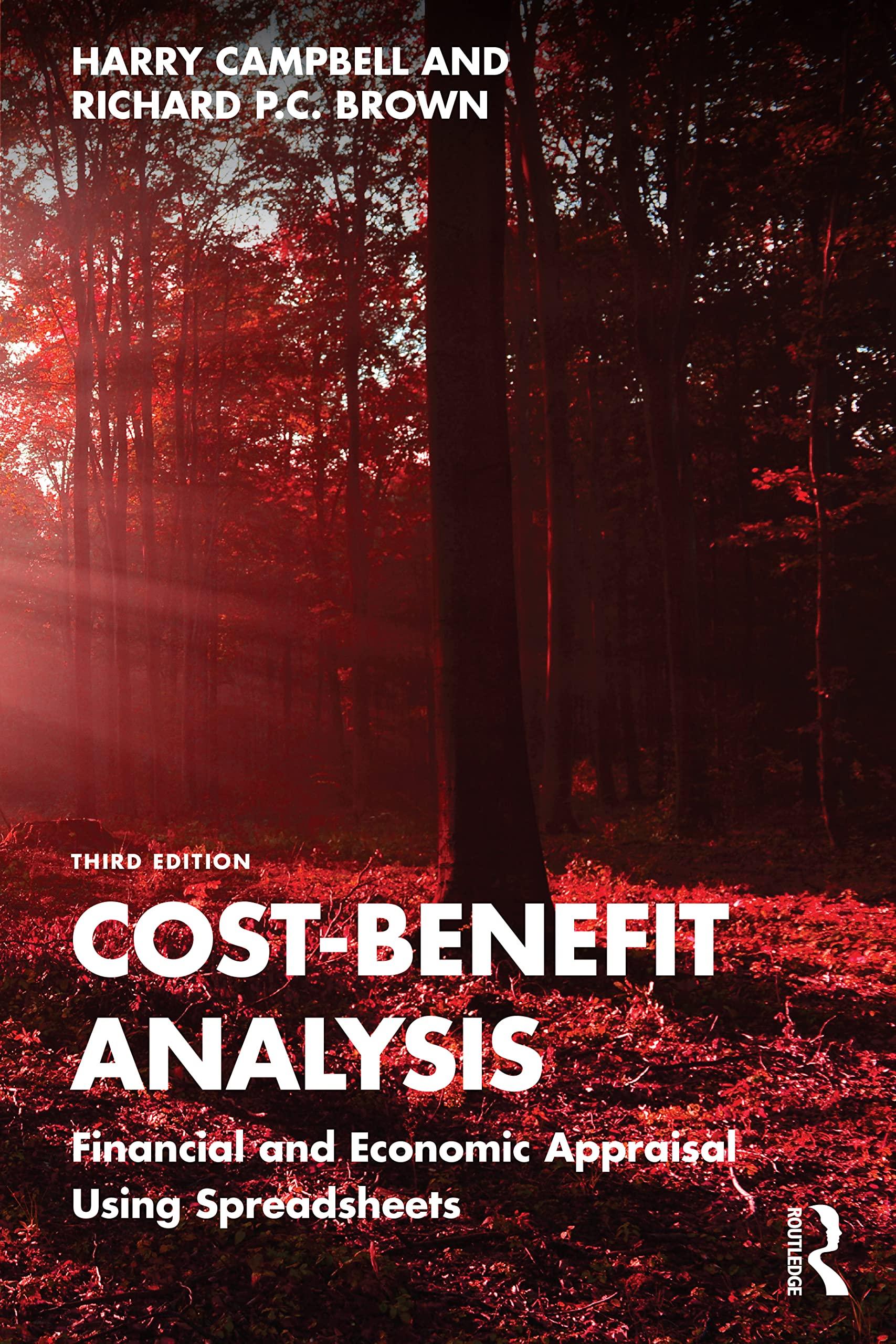A firms stock of working capital at the end of each year in the life of a
Question:
A firm’s stock of working capital at the end of each year in the life of a project was as follows:
Year 0 1 2 3 4 5 Working Capital ($) 0 50 75 70 30 20 Calculate the working capital cost stream which should be entered in the Market Analysis. 6 Explain why depreciation and interest should not be included as costs in a discounted cash flow (DCF) analysis of a project. 1 Which of the following conditions must hold in the equilibrium of a competitive market in which a specific tax is levied on the commodity? (A specific tax is a fixed dollar amount per unit to be paid on sale of the product, as opposed to an ad valorem tax which is calculated as a percentage of the sale price.) 2 Draw an upward sloping supply curve and a downward sloping demand curve for labour.
Label the axes. Assuming that the labour market is distorted by a minimum wage (which is a binding constraint), draw in the level of the minimum wage, labelled wm, and identify the quantity of labour demanded, labelled Q. On the supply curve of labour, identify the level of the wage corresponding to Q units of labour supplied, and label it wa.
i State what the Efficiency Analysis rule tells us about valuing labour input in a cost-benefit analysis.
ii Suppose that a project will use a small amount of labour drawn from the above market. Under what circumstances should the labour be costed in the Efficiency Analysis at:
(a) wm per unit? or
(b) wa per unit?
Step by Step Answer:

Cost Benefit Analysis
ISBN: 9781032320755
3rd Edition
Authors: Harry F. Campbell, Richard P.C. Brown






